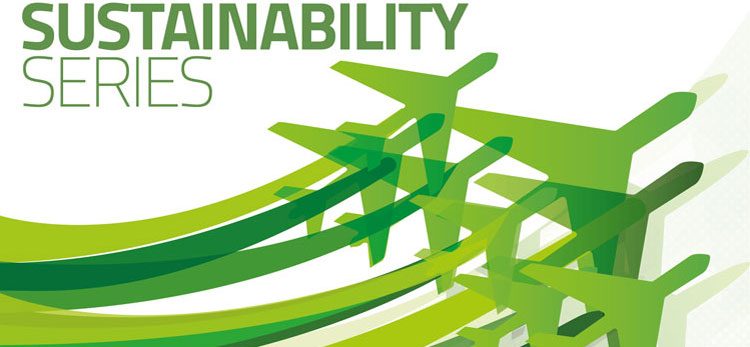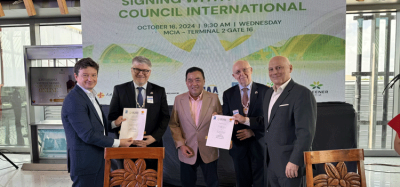Sustainability Series: The Dominican Republic’s birds, bees and outstanding beauty
- Like
- Digg
- Del
- Tumblr
- VKontakte
- Buffer
- Love This
- Odnoklassniki
- Meneame
- Blogger
- Amazon
- Yahoo Mail
- Gmail
- AOL
- Newsvine
- HackerNews
- Evernote
- MySpace
- Mail.ru
- Viadeo
- Line
- Comments
- Yummly
- SMS
- Viber
- Telegram
- Subscribe
- Skype
- Facebook Messenger
- Kakao
- LiveJournal
- Yammer
- Edgar
- Fintel
- Mix
- Instapaper
- Copy Link
Posted: 2 August 2019 | Melina Santos Vanderlinder (VINCI) | No comments yet
The Dominican Republic is home to some unique environments, but how do we ensure aviation respects it? Melina Santos Vanderlinder from VINCI Airports explains the protective measures that have been implemented by VINCI Airports’ subsidiary Aerodom, which operates the concession of six airports in Dominican Republic.


What are the three main things that you are doing to conserve the outstanding beauty that surrounds the airports in the Dominican Republic?
Our strong environmental commitment in Dominican Republic is directly in line with VINCI Airports’ global strategy, AirPact.
It defines tangible goals that are shared by the entire VINCI Airports network of 46 airports in 12 countries. It is being deployed since 2016 – it was a market first in the airport concession industry – and in three years it really has made a difference.
The implementation of AirPact in Dominican Republic is ambitious and delivering strong results. I would say the main thing we are doing is harvesting natural energy: In all six of our airports, we have installed solar panels, and these have been a great influence for the airports and environment. Currently, more than 24 per cent of our total electricity consumption comes from solar power; harvesting energy from natural sources, not fossil fuels. Some of the airports cover almost entirely their electrical needs via these solar panels.
It’s important to know that most of the energy in the Dominican Republic comes from the national grid, which is generated from fossil fuels. The solar panels we have help us to reduce our consumption of electricity from the grid, therefore reducing the amount of fossil fuels we use. This in turn has also an impact upon our carbon footprint and carbon emissions.
Secondly, I highlight the work we have done to reduce the amount of waste that goes to landfill.
In the Dominican Republic we currently don’t have sanitary landfill sites, they’re mostly open dumps. Due to this we have started waste segregation programmes. The first was in Santo Domingo Las Americas, which is our biggest airport, which then expanded to Aeropuerto International La Isabela. We are planning on expanding these waste management plans to all our six airports over time.
We have just finished the construction of a waste segregation facility that will be launched in August 2019. Within both the terminal and offices at the airport, we have started recycling programmes, campaigns to educate/explain to personnel and passengers how to recycle in the terminal. This is something completely novel in the Dominican Republic I would say, since it’s a cultural change that needs to happen. We estimate that more than 40 per cent of our waste can be diverted and not end in landfill. This change means that we are greatly reducing the waste we send to open dumps, as being an island, it is important for us to reduce the amount of waste that we are sending to landfill.
Incorporated within these programmes on energy and waste conservation, we can add the conservation and promotion of biodiversity. When we talk about biodiversity protection, we have two approaches to this.
One element comes from the desire to protect biodiversity whilst the other one is prevention and reduction of environmental pollution. In this second element we want to ensure that the products we are using are eco-friendly and we observe how they can interact or bio accumulate in the environment, whilst monitoring the impact they have on wildlife. For example, we want to understand how our consumption of cleaning products can impact the environment and how we can reduce this.
Our approach to biodiversity includes a wildlife management and control programme, another element is our environmental pollution prevention and reduction initiative. You might ask why we present it in this way. Primarily, this is because through the wildlife management and control programme we have implemented for several years passive methods to reduce aviation hazards to wildlife. We monitor wildlife during take offs and landings and make sure they remain away from danger by eliminating the sources of attraction. These can include the cutting of the grass, eliminating puddles and making sure there is no rubbish around the runway.
In the past we have also evaluated the behaviour of wildlife around the airport and implemented actions accordingly. We found out that for certain birds the sound of predators will keep them away so now we play the sounds when these types of birds are spotted.
Last month, we launched a programme at Las Americas which focuses on the biomonitoring of bees. This allows us to better understand our use of pesticides and herbicides on the runway (used for security reasons for the aircraft); the bees act as an environmental indicator. We are currently seeking to avoid the use of pesticides, and bees allow us to pursue these efforts. It is indeed possible to analyse and quantify bioaccumulated substances in bees to measure concretely the effect of our actions to reduce the use of pesticide products.
How do you envisage the airports of the Dominican Republic growing with projected passenger growth over the next 20 years?
Luckily, we have a guideline and a vision of where we want to go despite the number of passengers we have. It is good to know that we are planning for expansion and as our operations grow, our environmental responsibility grows.
AirPact aims to establish shared objectives, which help airports to define their priorities according to their specific situation and accurately assess their performance. Through this, we can assess which performance areas require more attention. This allows us to identify problem areas while focusing on expansion of our terminals and infrastructure. Moreover, our airports are applying for the ISO 14001 certification. We are starting with the two airports in Santo Domingo, but we want to see this certification expanded across all our airports. As these standards are world-renowned, we ensure that our operations are carried out with the utmost responsibility to the environment. There is an accountability of being certified; we are held responsible for our actions and we are committed to improve our performance with the growth of our traffic.
On the topic of accreditation, do you have the ACI ACA carbon accreditation in your sights?
Yes, we are currently ACA Level I certified and we’re happy to say we were the first group in Latin America and Caribbean to certify all its airports at this level at the same time. We carry out regular inventories of our emission sources and make sure we understand how we can control them. In the years to come we want to improve and apply for the following level of performance ACA Level II, in which we will elaborate a carbon management plan, targeting a reduction of our carbon footprint. These are ways for us to communicate to the international aviation community that we are committed to develop our operations in a sustainable way, to decrease our carbon emissions that are directly under our power whilst involving our stakeholders in the fight against climate change.
Do you think the social responsibility of the airport is just as important as the environmental responsibility?
Yes, of course. A healthy environment is directly linked to healthy communities and we cannot talk about environmental responsibility without acknowledging the social aspects. For example, over the next few years we want to implement a noise reduction programme. This could be seen as environmental noise, but we need to consider how the communities around us experience aircraft noise and what can be done to reduce that. Here we will have to work with the community hand-in-hand. That is why our AirPact strategy aims to advance the environmental agenda in our airports by generating a genuinely positive impact for our communities.
Similarly, with the biomonitoring of the bees, we have to make sure that the honey production is done responsibly. We are investigating ways to involve the local communities in this programme. We have a sense of stewardship with the environment, and it is vitally important that we look after it.
Do you think the future of aviation is rooted in environmental initiatives?
Yes, I am certain it will be. I think that, right now, the main environmental concern worldwide is climate change and as a result, the increase of global temperature. Although aviation only represents less than 3.5 per cent of global emissions, the sector is really motivated and willing to explore the options out there. It could be biofuel or it could be electrical charging stations during aircraft parking. All these different alternatives are already being explored to make sure that the future of aviation is sustainable.
The progress that we at VINCI Airports are delivering with AirPact, shows that the industry is going in the right direction. Altogether, we can make air mobility more sustainable while keeping it accessible to the greater number.
Biography
Melina Santos Vanderlinder is Environmental, Health and Safety Manager at VINCI Airports’ subsidiary Aerodom, which operates the concession of six airports in the Dominican Republic. As an Environmental Engineer with a Master’s in Sustainable Engineering, focused on sustainability in the developing world, Vanderlinder first worked as an environmental consultant for private and public projects. She then worked in the public energy sector as an environmental, social, health and safety manager for the largest state-owned energy project in the Dominican Republic. She joined VINCI Airports’ subsidiary in Dominican Republic in November 2018.


















